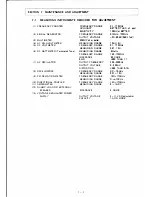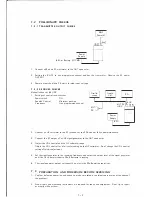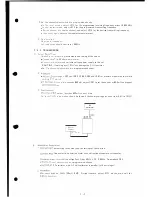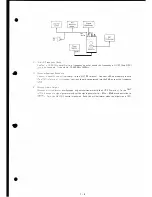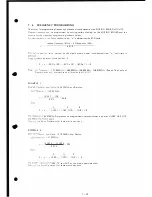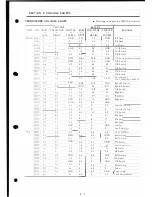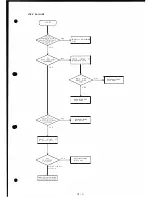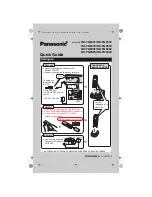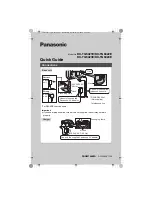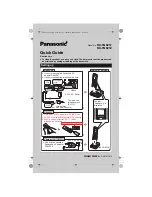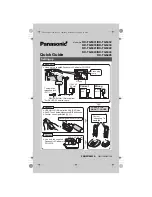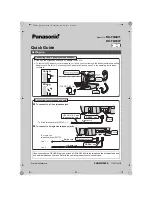
3.
Remove the transceiver case as shown on Page 6 - 1 . Use a screw driver that fits the screw.
4.
To open the hinge chassis remove the two screws as shown on Page 6
- 2.
5.
Attach an 8.0 - 1 1 .0V DC external power source to the battery clip or screw. Be sure to check the
polarity.
6.
In the case of a transmission problem, a dummy load should be connected to the antenna connector.
In the case of a receiving problem, an antenna or signal generator is connected to the antenna
connector. Be careful not to transmit into the signal generator.
7.
Recheck for the suspected malfunction with the power switch on.
8.
Check the defective circuit and measure the DC voltages of the collector, base and emitter of each
transistor.
9.
When checking a transmission problem, it is convenient to short circuit an accessory mic connector
plug and insert it, turning on the transmitter.
7
-
4
HOW TO CHECK
7-4-1 RECEIVE
1 . Check the frequency of P.
L. L.
unit when you are uaable to receive with a strong signal present and
noise present when turning up the
AF
volume.
2.
When no noise is present at the speaker, check audio frequency amplifier or 5V regulator first.
3.
Inject RF through a 0.0 1 µF capacitor from an FM signal generator modulated with 1 KHz audi
'
o
modulation (FM). to points
(A)
through (D) in order, check for receiver output.
(A)
=
Selected channel frequency
(B)
=
Selected channel frequency
(C)
=
1 0.695MHz
(D)
=
1 0.695MHz
4.
Check
(E)
and (F) with an oscilloscope, for demodulated output in the audio frequency range.
A
-1
B
c
(D)
D
E
7-�
G
'®'-"'(iii)
·
©
""
�
·
©
'�"·
cgy













